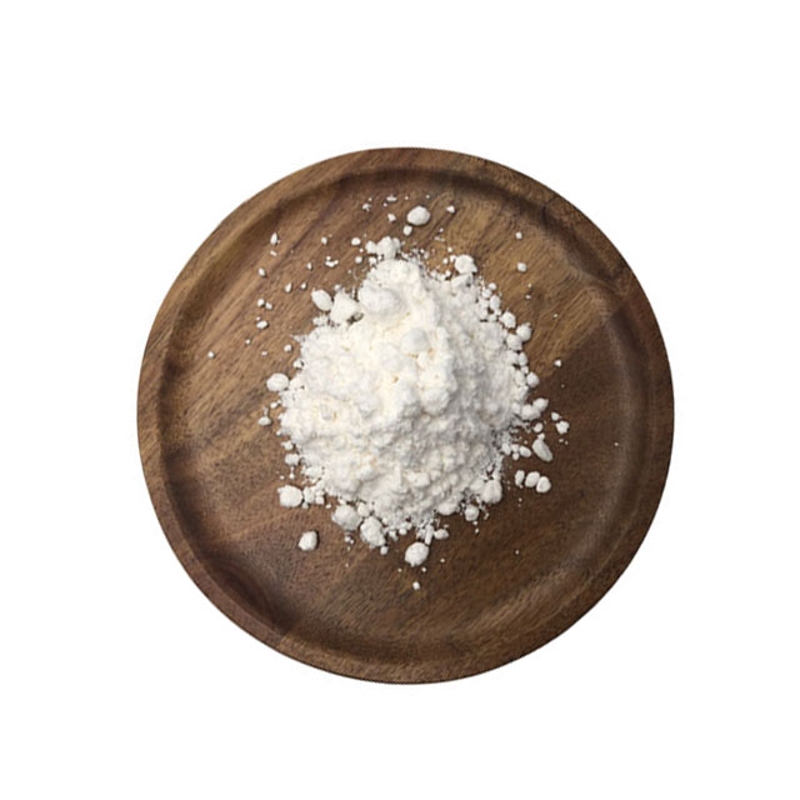-
Categories
-
Pharmaceutical Intermediates
-
Active Pharmaceutical Ingredients
-
Food Additives
- Industrial Coatings
- Agrochemicals
- Dyes and Pigments
- Surfactant
- Flavors and Fragrances
- Chemical Reagents
- Catalyst and Auxiliary
- Natural Products
- Inorganic Chemistry
-
Organic Chemistry
-
Biochemical Engineering
- Analytical Chemistry
- Cosmetic Ingredient
-
Pharmaceutical Intermediates
Promotion
ECHEMI Mall
Wholesale
Weekly Price
Exhibition
News
-
Trade Service
With ASCO 2022 still two weeks away, many studious people have already begun to prepare in advance
NO.
Reported by: Hope Rugo Abstract Number: LBA1001
Why: Can the registration data in HR-positive breast cancer give gosartozumab an indication in addition to triple-negative breast cancer?
NO.
NO.
3: LUMINA study: A prospective trial of T1N0 luminal breast cancer type A after breast-conserving surgery (BCS)
3: LUMINA study: A prospective trial of T1N0 luminal breast cancer type A after breast-conserving surgery (BCS)
Presented by: Timothy Whelan Abstract number: LBA501
Why: Does this potentially change the standard treatment regimen for T1N0 luminal breast cancer?
Med Supplement: Adjuvant radiation therapy (RT) is currently the standard option
after breast conserving surgery in patients with early invasive breast cancer.
However, some patients have a lower risk of recurrence, and there is a way to screen out this subset of patients to exempt them from radiation therapy
.
During the 2021 ASCO meeting, Abstract 512 further stratified the sweBCG91 study patient population, screened the label containing 16 genes, named POLAR, suggesting that low-risk patients with POLAR received no significant benefit from radiation therapy, and also expected more clinical study data
.
NO.
4: HER3 ADC – Results of a Phase I/II study of Patritumab deruxtecan in patients with herr3-expressed metastatic breast cancer
4: HER3 ADC – Results of a Phase I/II study of Patritumab deruxtecan in patients with herr3-expressed metastatic breast cancer
Reported by: lan Krop Abstract number: 1002
Why: ADC is too hot right now, the story of HER3 ADC may be similar to HER2 ADC (T-DXd), shouldn't we be calmer?
Med Supplement: HER3 hyperexpression is closely related
to tumorigenesis, development, and patient prognosis.
Taking lung cancer as an example, in vitro studies have shown that the expression level of HER3 is related
to the migration rate of tumor cells.
Patritumab deruxtecan (HER3-DXd, U3-1402) is currently the only HER3-ADC
to enter Phase II clinical trials.
On December 23, 2021, First Three announced that the FDA granted patritumab deruxtecan breakthrough therapy for patients
with metastatic or locally advanced EGFR-positive non-small cell lung cancer (NSCLC) who have received disease progression after receiving three generations of EGFR-TKI and platinum drugs.
NO.
5: Exploratory analysis of KEYNOTE-522: Event-free survival (EFS) outcomes of Pembrolizumab plus chemotherapy versus placebo + neoadjuvant chemotherapy for early triple-negative breast cancer
5: Exploratory analysis of KEYNOTE-522: Event-free survival (EFS) outcomes of Pembrolizumab plus chemotherapy versus placebo + neoadjuvant chemotherapy for early triple-negative breast cancer
Presented by: Lajos Pusztai Abstract number: 503
Rationale: It may not be enough to assess prognosis with complete pathological response (pCR), residual tumor burden (RCB) may be a better risk assessment indicator
.
Med Supplement: The main endpoints of the KEYNOTE-522 study were pCR and EFS
.
The first interim analysis showed that in patients with early TNBC, the pCR was significantly higher in patients receiving pambolizumab plus neoadjuvant chemotherapy than in patients
receiving placebo plus neoadjuvant chemotherapy.
In February, the New England Journal of Medicine NEJM published the results of the KEYNOTE-522 study, which translated a complete pathological response into a survival benefit independent
of PD-L1 expression levels.
But one study alone cannot determine that pCR can be used as a biomarker for early TNBC prognosis, particularly in a meta-analysis published in BMJ in 2021 showing that it is not a substitute for disease-free survival and overall survival
.
So the authors of KEYNOTE-522 said in a previous article that research on molecular biomarkers is still ongoing
.
NO.
6: Analysis of the PALOMA-2 study: Piperacil (Palbociclib) + Letrozole versus placebo + letrozole first-line treatment of ER+/HER2-advanced breast cancer overall survival (OS)
6: Analysis of the PALOMA-2 study: Piperacil (Palbociclib) + Letrozole versus placebo + letrozole first-line treatment of ER+/HER2-advanced breast cancer overall survival (OS)
Reported by Richard Finn Abstract number: LBA1003
Why it made the list: OS data
on piperelli first-line treatment has been missing in the past.
Med Supplement: Currently, pipericelli has only obtained OS data in the Phase II clinical trial PALOMA-1 study, which has been extended but not statistically significant
.
The median OS of piperacilly plus letrozole vs letrozole was 37.
5 vs 33.
3 months (HR =0.
813, 95% Cl 0.
492-1.
345, P[two-sided]=0.
42).
Previously, PALMO-2 only released PFS results, so I am very much looking forward to the final OS results, and I wonder if Piperelli can further verify its effectiveness
.
NO.
7: FAKTION research analysis: add OS data for biomarker stratification analysis and update PFS data
.
The FAKTION study aims to evaluate the efficacy of fulvestrant plus Capivasertib versus fulvestrant plus placebo in patients with ER+ advanced breast cancer after the treatment of aromatase inhibitors
7: FAKTION research analysis: add OS data for biomarker stratification analysis and update PFS data
.
The FAKTION study aims to evaluate the efficacy of fulvestrant plus Capivasertib versus fulvestrant plus placebo in patients with ER+ advanced breast cancer after the treatment of aromatase inhibitors
Reported by: Robert Jones Abstract number: 1005
Reason for the list: The efficacy of single-agent fulvestrant is not satisfactory, and in patients with ER+ advanced breast cancer, I wonder if it can help Capivasertib improve efficacy?
Med Supplement: Capivasertib is the world's earliest AKT inhibitor to enter clinical phase III development, and its indications are mainly concentrated in HR+ breast cancer, triple-negative breast cancer and prostate cancer
.
Capivasertib has previously yielded positive results in a Phase II clinical trial in patients with metastatic triple-negative breast cancer, where Capivasertib combined with paclitaxel first-line treatment for triple-negative breast cancer significantly prolonged PFS in patients
.
In 2020, AstraZeneca disclosed preliminary results
from the FATTION study.
The results showed that patients randomized with fulvestrant plus capivasertib (n=69) had significantly longer mPFS (10.
3 vs.
4.
8 m) and a 42% reduction in risk of disease progression (HR=0·58, 95% CI 0.
39–0.
84) compared with fulvestrant plus placebo (n=71), reaching the primary endpoint
of the study.
NO.
8: Randomized Phase III DENINY-Breast03 study: Safety follow-up of T-DXd versus T-DM1 in patients with HER2+ unresectable and/or metastatic breast cancer
8: Randomized Phase III DENINY-Breast03 study: Safety follow-up of T-DXd versus T-DM1 in patients with HER2+ unresectable and/or metastatic breast cancer
Rapporteur: Erika P.
Hamilton Abstract number: 1000
Why: T-DXd is 2-line in the current treatment criteria, how well does T-DXd perform in tolerability and safety if we advance it?
Med Supplement: Previous safety findings from the DESTINY-Breast03 study showed that the incidence of drug-related adverse events of any level in the T-DXd and T-DM1 groups was 98.
1% and 86.
6%, respectively, and the incidence of drug-related adverse events in The T-DXd group and T-DM1 group was 45.
1% and 39.
8%,
respectively.
Drug-related interstitial lung disease or noninfectious pneumonia occurred in 10.
5% and 1.
9% of patients in the T-DXd and T-DM1 groups, respectively, but did not develop grade 4-5 drug-related interstitial lung disease or noninfectious pneumonia
.
NO.
9: Effect of Ribociclib dose adjustment on HR+/HER2-advanced breast cancer OS outcomes in the MONALEESA-2 study
9: Effect of Ribociclib dose adjustment on HR+/HER2-advanced breast cancer OS outcomes in the MONALEESA-2 study
Reported by: Lowell Hart Abstract number: 1017 Poster number: 395.
Why: Does dosage reduction affect key results data? My guess is "no"
.
Med Supplement: In March this year, NEJM officially released OS data from the MONALEESA-2 study after nearly 7 years of follow-up, and the median OS of rebexilli + letrozole vs placebo + letrozole was 63.
9 vs 51.
4 months (HR=0.
76; 95% CI 0.
63-0.
93; two-sided P=0.
008)
NO.
10: NeoSTAR findings: A phase II study of neoadjuvant therapy of gosartozumab in local triple-negative breast cancer
10: NeoSTAR findings: A phase II study of neoadjuvant therapy of gosartozumab in local triple-negative breast cancer
Presented by: Laura Spring Abstract number: 512 Poster number: 284
Reason for the list: ADC advances to the exploration
of neoadjuvant therapy.
Med Additional Information: The ASCENT study of gosartozumab confirmed its efficacy in metastatic TNBC, which has been approved for second-line treatment
of metastatic TNBC in several countries around the world.
At present, gosartozumab has also been actively explored in the first-line treatment of TNBC, early TNBC neoadjuvant and adjuvant therapy (NeoSTAR study and SASCIA study
).







